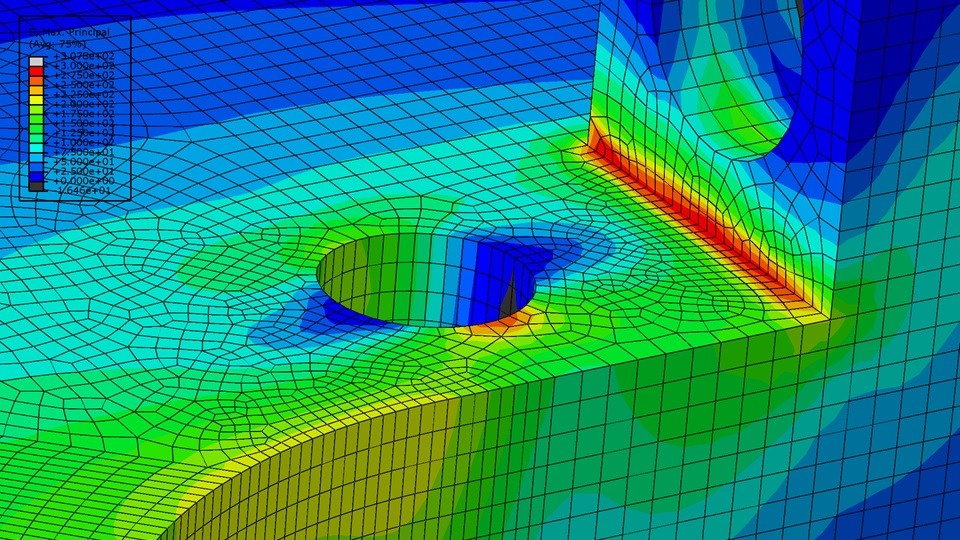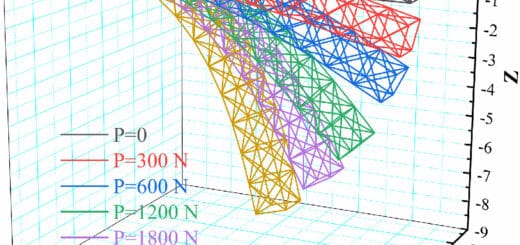Finite Element Analysis | Important Facts
Finite Element Analysis (FEA) is a powerful numerical technique used to analyze and solve complex engineering problems. By dividing a complex structure or system into smaller, more manageable elements, FEA enables engineers to simulate and predict the behavior of various physical phenomena. This article provides a comprehensive overview of finite element analysis, its applications, benefits, limitations, and future trends.
Finite Element Analysis, also known as FEA, is a computational method used to obtain approximate solutions for various engineering problems. It involves dividing a complex geometry or system into finite elements, hence the name, and applying numerical techniques to analyze the behavior of each element. By combining the behaviors of all the elements, engineers can gain valuable insights into the overall performance of the system under different conditions.
History and Development of Finite Element Analysis
The development of FEA can be traced back to the early 1940s and has since undergone significant advancements.
The origins of FEA can be attributed to the work of researchers like Richard Courant, Kurt Friedrichs, and John von Neumann, who developed numerical methods for solving partial differential equations during World War II. These methods, known as the finite difference method, formed the basis for the later development of FEA.
In the 1950s and 1960s, the finite element method (FEM) began to take shape as a more versatile and accurate approach to numerical analysis. Engineers and mathematicians, including Ray W. Clough, Richard H. Gallagher, and Olgierd C. Zienkiewicz, played crucial roles in developing and popularizing the FEM.
The advent of digital computers in the 1960s and 1970s allowed for the practical implementation of FEA. Early FEA programs were limited by the computational resources available at the time. However, as computers became more powerful, FEA gained wider acceptance and began to be used in industry for solving real-world engineering problems.
In the 1980s and 1990s, FEA software became more sophisticated, offering advanced capabilities and user-friendly interfaces. The development of commercial software packages, such as ANSYS, MSC Nastran, and Abaqus, made FEA accessible to engineers and expanded its applications across various industries.
Over the years, FEA has evolved to encompass a wide range of analysis types, including structural analysis, thermal analysis, fluid flow analysis, and electromagnetic analysis. It has become an essential tool in product design, optimization, and virtual prototyping, allowing engineers to predict and evaluate the behavior of structures and systems under different conditions without the need for physical testing.
Advancements in computing power, numerical algorithms, and modeling techniques have further improved the accuracy and efficiency of FEA. Researchers continue to refine and enhance the method, enabling more complex and detailed simulations.
In recent years, FEA has also benefited from integration with other technologies such as computer-aided design (CAD), computational fluid dynamics (CFD), and optimization algorithms. This integration has enabled multidisciplinary analysis and optimization, leading to more efficient and innovative engineering solutions.
Understanding the Finite Element Method
At the core of finite element analysis lies the Finite Element Method (FEM). FEM is a numerical technique that approximates the behavior of a system by dividing it into smaller elements, each represented by a set of mathematical equations. These equations consider the properties and interactions of the elements, allowing engineers to simulate and predict the behavior of the entire system.
The process of finite element analysis involves several steps. First, the geometry of the system is discretized into smaller elements, which can be simple shapes like triangles or quadrilaterals in two dimensions or tetrahedra or hexahedra in three dimensions. Next, the properties and governing equations for each element are defined. These equations are then solved iteratively to obtain approximate solutions for the entire system.
Applications of Finite Element Analysis
Finite element analysis finds applications in a wide range of industries and disciplines. Here are some notable examples:
1. Structural Engineering
In structural engineering, FEA plays a crucial role in analyzing and designing buildings, bridges, and other infrastructure projects. Engineers can simulate the behavior of various structural components under different loads and conditions, ensuring their strength, stability, and durability.
2. Mechanical Systems
FEA is extensively used in mechanical engineering to analyze and optimize the performance of mechanical systems. It enables engineers to evaluate factors such as stress distribution, deformation, and vibration characteristics in components like machine parts, engines, and gear systems.
3. Fluid Dynamics
In the field of fluid dynamics, FEA helps engineers study the behavior of fluids and gases under different flow conditions. It assists in analyzing fluid pressure, velocity distribution, and turbulence effects in applications such as aerodynamics, hydrodynamics, and HVAC system design.
4. Heat Transfer
FEA is also applied to analyze heat transfer phenomena in various systems. Engineers can simulate and optimize heat conduction, convection, and radiation in applications like thermal management of electronic devices, HVAC systems, and heat exchangers.
Benefits and Advantages of Finite Element Analysis
Finite element analysis offers several benefits and advantages that contribute to its popularity in engineering and scientific fields:
1. Cost and Time Efficiency
FEA enables engineers to evaluate design alternatives virtually, reducing the need for costly physical prototypes. By identifying potential issues early in the design process, FEA helps minimize costly rework and modifications, ultimately saving time and resources.
2. Design Optimization
With FEA, engineers can optimize designs to enhance performance and efficiency. By analyzing different design variations, materials, and configurations, FEA helps identify the most optimal solutions, leading to improved product quality and competitiveness.
3. Error Reduction
By simulating and predicting the behavior of systems, FEA allows engineers to identify potential design flaws, stress concentrations, and failure points. This helps in reducing the risk of errors and ensuring the structural integrity and safety of the analyzed components or structures.
Challenges and Limitations of Finite Element Analysis
While finite element analysis is a powerful tool, it is not without its challenges and limitations. Here are some considerations to keep in mind:
1. Assumptions and Simplifications
FEA involves making assumptions and simplifications to represent complex systems with finite elements. These simplifications can introduce some level of error and may not accurately capture all real-world complexities.
2. Meshing Issues
The accuracy of FEA results heavily depends on the quality of the mesh, which represents the discretized elements. Generating an appropriate mesh that adequately represents the geometry and features of the system can be a challenging and time-consuming task.
3. Accuracy Concerns
FEA provides approximate solutions to complex problems. While it can yield highly accurate results under certain conditions, there are cases where the accuracy may be limited, particularly when dealing with nonlinear or transient phenomena.
Finite Element Analysis Software
To perform finite element analysis, engineers rely on specialized software packages that provide the necessary tools and capabilities. Some popular FEA software options include:
- Abaqus
- ANSYS
- COMSOL Multiphysics
- MSC Nastran
- SolidWorks Simulation
These software packages offer a range of features such as geometry modeling, mesh generation, solver algorithms, and result visualization, enabling engineers to conduct comprehensive analyses.
Industry Examples and Case Studies
Finite element analysis has made a significant impact in various industries. Here are a few examples:
1. Aerospace Engineering
In the aerospace industry, FEA plays a critical role in designing and analyzing aircraft components and structures. Engineers utilize FEA to evaluate the structural integrity of wings, fuselages, and landing gear, ensuring their ability to withstand various loads and environmental conditions.
2. Automotive Industry
FEA is extensively employed in the automotive sector to optimize vehicle designs for safety, performance, and fuel efficiency. By simulating the behavior of car components, such as suspension systems and crashworthiness, engineers can enhance vehicle performance and occupant safety.
3. Biomechanics and Medical Applications
In the field of biomechanics, FEA helps analyze the behavior of biological structures and medical devices. It aids in the design and evaluation of orthopedic implants, prosthetics, and dental components, ensuring their functionality and compatibility with the human body.
Future Trends and Innovations
The field of finite element analysis continues to evolve, driven by technological advancements and emerging needs. Here are some future trends and innovations to watch out for:
1. Integration with Artificial Intelligence
The integration of finite element analysis with artificial intelligence (AI) techniques is expected to revolutionize the field. AI algorithms can assist in automating various aspects of the analysis process, including mesh generation, optimization, and result interpretation, thereby enhancing efficiency and accuracy.
2. Advanced Simulation Techniques
Researchers are continuously developing advanced simulation techniques to improve the accuracy and capabilities of FEA. This includes incorporating nonlinear material behaviors, dynamic effects, and multiphysics simulations, allowing for more realistic and comprehensive analyses.
3. Increased Computational Power
As computational power continues to increase, engineers can perform more complex and detailed finite element analyses. High-performance computing platforms and cloud-based solutions enable faster computations and the handling of massive datasets, opening new possibilities for large-scale simulations.
Finite element analysis is a powerful tool that enables engineers to simulate and analyze the behavior of complex systems. Its applications span various industries, from structural engineering to fluid dynamics and heat transfer. While FEA offers numerous benefits, it is essential to consider its limitations and challenges to ensure accurate and reliable results. With future advancements in integration with AI, advanced simulation techniques, and increased computational power, the field of finite element analysis is poised to continue advancing and transforming engineering practices.
FAQs
What is the difference between FEA and FEM?
FEA stands for Finite Element Analysis, while FEM stands for Finite Element Method. FEA refers to the broader process of analyzing complex systems using numerical techniques, while FEM specifically refers to the mathematical principles and equations used to approximate the behavior of finite elements within the system.
How accurate is finite element analysis?
The accuracy of finite element analysis depends on various factors, including the quality of the mesh, the accuracy of material properties, and the assumptions made during the analysis. When appropriately applied and validated, FEA can yield accurate results within an acceptable margin of error.
Can finite element analysis be applied to any type of problem?
FEA is a versatile technique and can be applied to a wide range of engineering and scientific problems. However, its applicability depends on the nature of the problem and the ability to accurately represent the system with finite elements.
Is finite element analysis only used in engineering fields?
While FEA is extensively used in engineering disciplines, its applications are not limited to engineering alone. It is also utilized in fields such as physics, geology, biomechanics, and even finance, where numerical modeling and simulation are valuable.
What skills are required to perform finite element analysis?
Performing finite element analysis requires a combination of technical skills and domain knowledge. Some essential skills for FEA practitioners include:
- Strong understanding of mathematics, including calculus and linear algebra.
- Proficiency in engineering mechanics and physics principles.
- Knowledge of the finite element method and numerical analysis techniques.
- Familiarity with finite element analysis software and its functionalities.
- Ability to interpret and analyze simulation results accurately.
- Problem-solving and critical thinking abilities to tackle complex engineering problems.
- Attention to detail in mesh generation and model setup.
- Continual learning and staying updated with the latest advancements in FEA technology and methodologies.
Developing expertise in finite element analysis often requires hands-on experience and a solid educational foundation in engineering or a related field.




